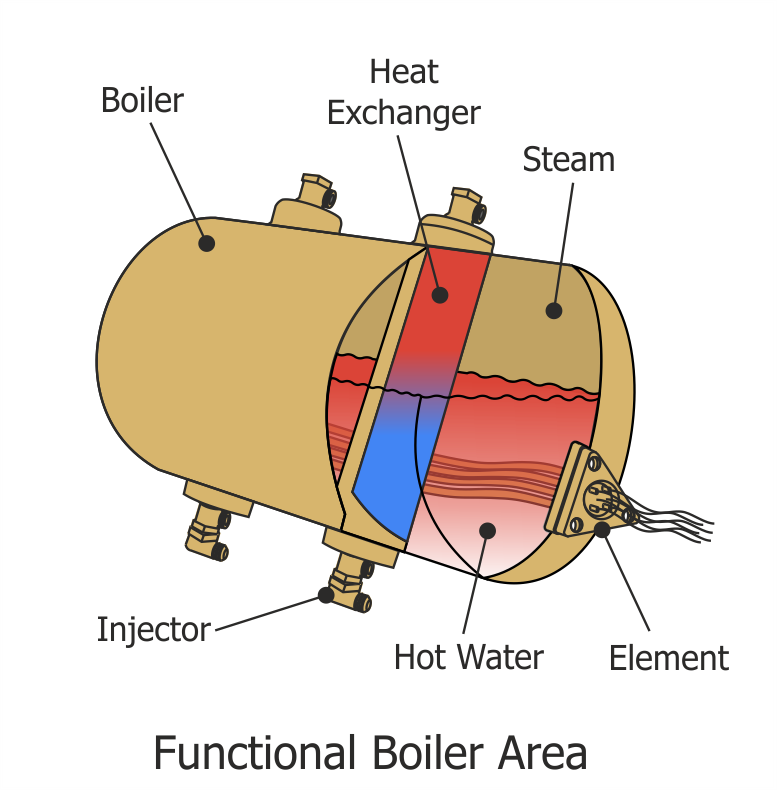"Step into the boiler room - Looking at how the heart of any quality espresso machine beats and heats."
Whilst other components around the machine are there to either get water in or out of the boiler, most of the functions would not work without a fully working boiler.
Steam for your cappuccinos, hot water for your espresso and americanos, all come via the machines boiler. How the boiler is able multi-task in producing these is really pretty simple,
Firstly, most espresso machine boilers are constructed using copper, which along with being a great thermal conductor, is also corrosion resistant, and flexible enough to withstand the mechanical stresses of the heating up and cooling down cycles.
It is also the most expensive metal to use, so look for a machine that employs copper and you know your in good hands from the manufacture.
There is also multi boiler machines on offer from manufactures, and unless your a total geek about only espresso, then a multi boiler machine is really not required and you will be wasting money thinking you need one.
For the above reason, we will only concentrate on the more popular single boiler machines, and the three production areas of the boiler.


Before we are able to draw any hot water from the boiler, the machine needs to be fully up to temperature by the control from the pressure switch and the element.
The amount of available hot water that the boiler is able to produce is governed by the water level setting on the level probe, as you will see there is a trade off, the more hot water = the less steam capacity available.
When the boiler is fully up to pressure, around 1 bar, you are then able to draw hot water from the tap due to the location of the hot water outlet at the bottom of the boiler and the pressure forcing down from the steam at the top of the boiler.


Steam is generated inside the top portion of the boiler by heating up the water inside the boiler until the pressure reaches the set point of around 1 bar above atmospheric pressure, this setting is controlled by the pressure switch.
Once the boiler is up to pressure, you are then able to draw this steam off by opening the steam valve on the front of the machine. As you draw more steam from the boiler, the pressure will drop and force the heating cycle to start.
The more power the machine has, i.e. the wattage of the element, the quicker the recovery the boiler is able to achieve.



The last task the boiler has to carry out is heat the water up to the correct temperature for your espresso. This is achieved by circulating water around the heat exchanger and group head until you select a drink option.
No water is allowed to flow out of the group head until the solenoid valve is operated which then diverts the heated water through the diffuser and into the portafilter, this is carried out using fresh water from the flow meter.
If the machine has been sat for a while, it is recommended to carry out a quick flush before fixing the portafilter onto the group head, this ensures that there is fresh water inside the heat exchanger and at the correct temperature.
There is not a lot to really go wrong with the boiler itself apart from failing a boiler inspection due to weld failure or excessive scale build up. All problems are usually caused by other functions attached to the boiler.
a) Steam leaking from the top of the boiler can be caused by leaking safety valve or vacuum valve
b) Not heating up could be caused by either a faulty control circuit or the heating element itself.
